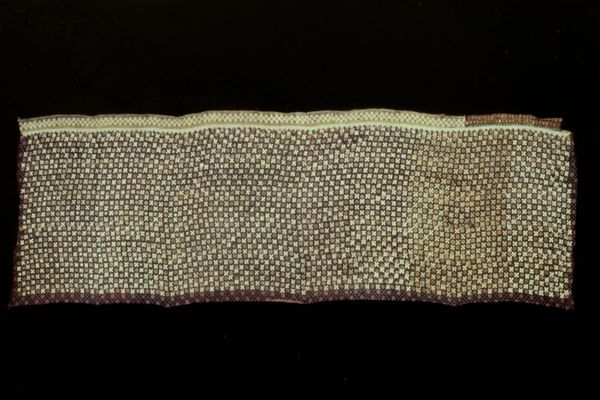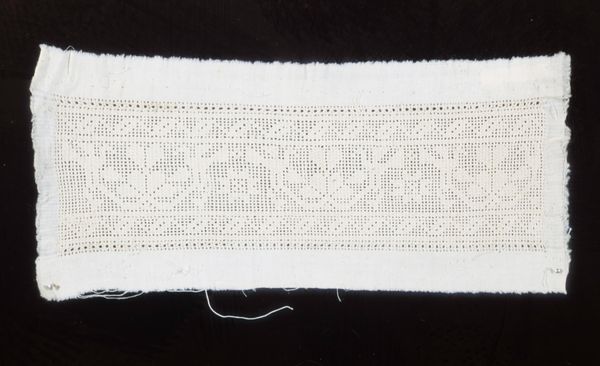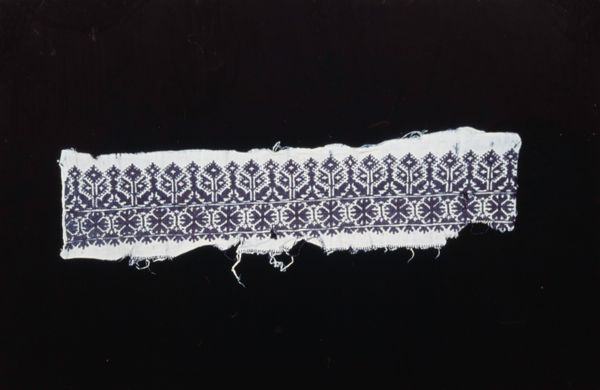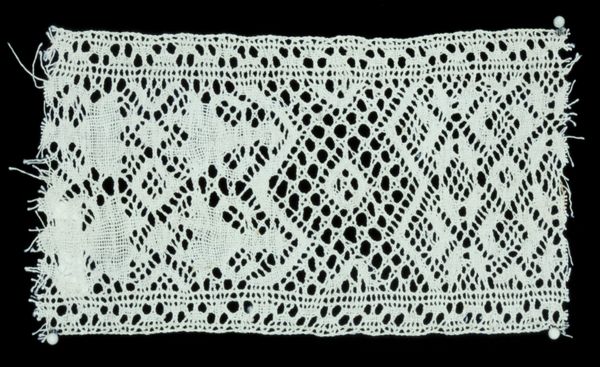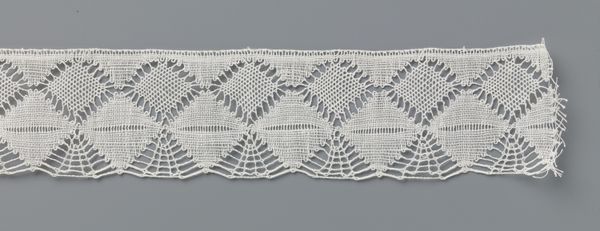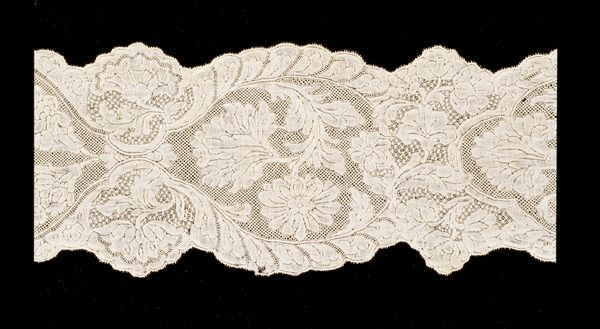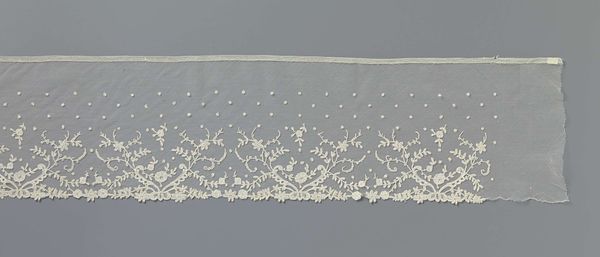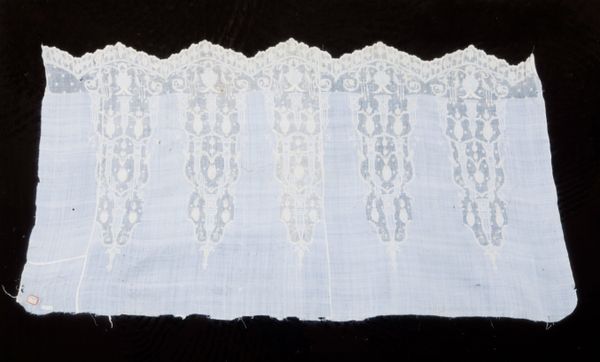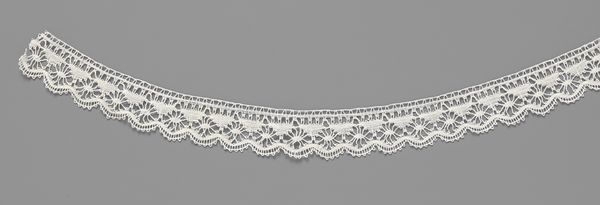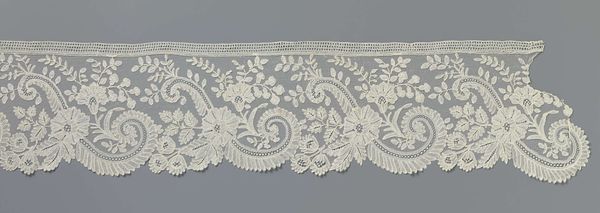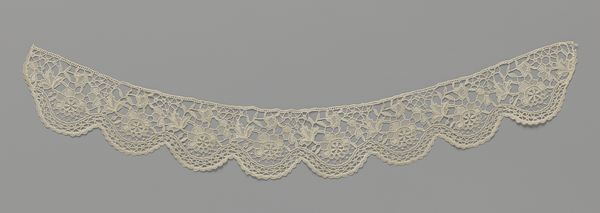
Copyright: Public Domain
Curator: Immediately, I'm struck by the almost ephemeral nature of the "Three Lace Borders." The delicate floral motifs evoke a sense of fragility. Editor: Indeed, they do, Curator. Now on display at the Minneapolis Institute of Art, this piece is ascribed to an anonymous creator and dates back to the 18th century. It presents an example of the intricacy of lace making prevalent in England at the time. Curator: Intricate is an understatement! These patterns... They remind me of carefully guarded secrets, whispered through generations of women who poured their lives into these small, exquisite details. It's almost dreamlike. Editor: A dream, perhaps woven from necessity. The piece serves as an emblem of both artistic expression and domestic labor; one has to consider the societal roles imposed on the hands that crafted these delicate borders. Was it luxury or servitude reflected in the motifs they chose, I wonder? Curator: Well, I am drawn to its function beyond mere ornamentation, as such borders often appeared in ritualistic or symbolic uses: births, weddings, even shrouds. Consider their protective nature too, an edge defending the primary textile to which they were added. A fine edge defining boundaries, quite literally. Editor: An astute observation. These borders visually negotiate hierarchies and act as class differentiators—clothing, after all, broadcast social status. The motifs signify economic position and reflect colonial power that supported such industries with raw materials and marketplaces across the globe. Curator: To me, each pattern also functions like a coat of arms, echoing nature's rhythms through repeated elements like floral forms—signifying regeneration, continuous cycles. Their delicate, interlacing structure conjures interconnectedness. Editor: A tangible representation of elaborate social webs, Curator! The textile connects past craftswomen to present viewers. Contemplating the tension between beauty, function, privilege and toil, our understanding of beauty deepens—adding complex hues to its visual appeal. Curator: Quite right. It makes you rethink that dream, doesn’t it? Perhaps a shared dream, interwoven across centuries. Editor: Leaving us all responsible to learn the threads that still bind us.
Comments
No comments
Be the first to comment and join the conversation on the ultimate creative platform.
